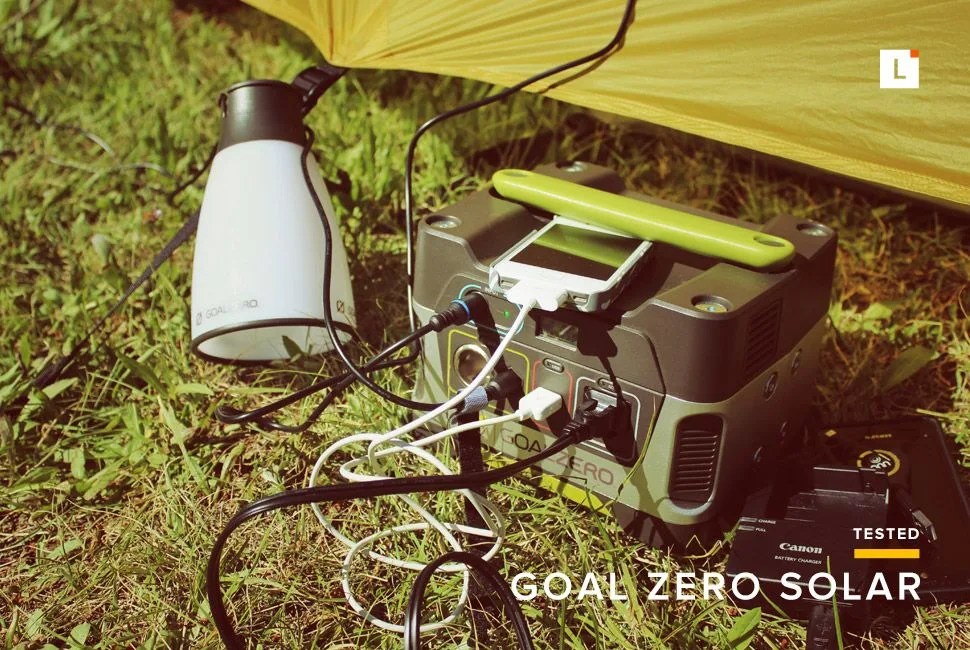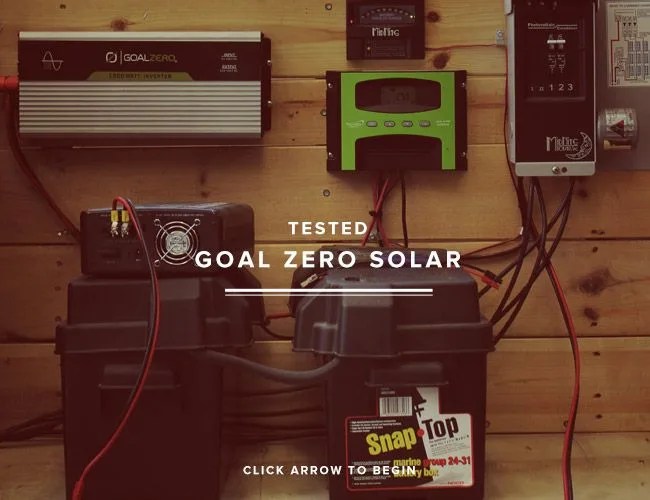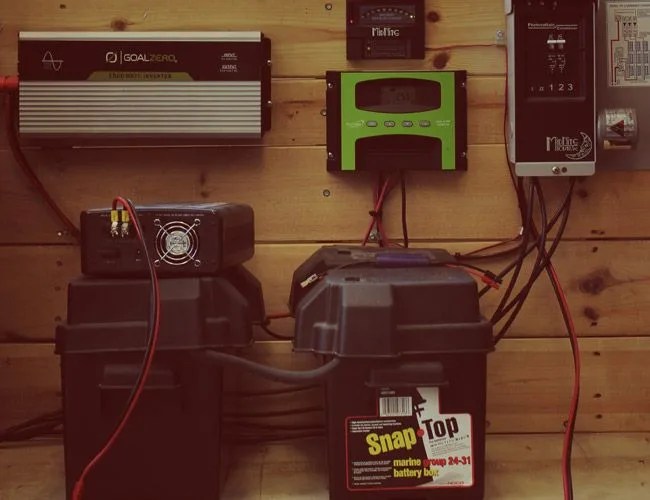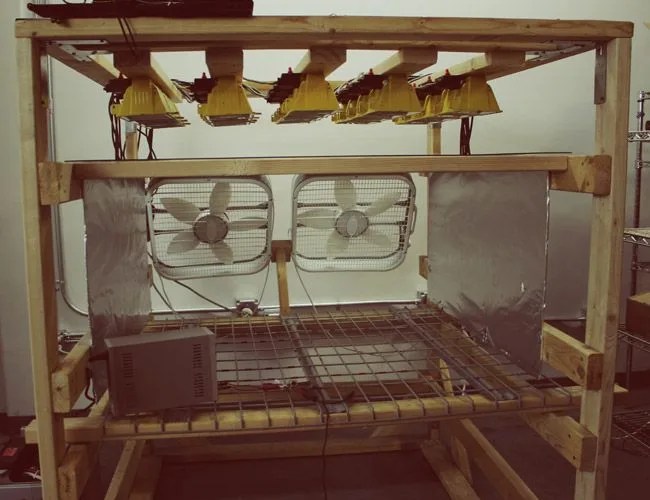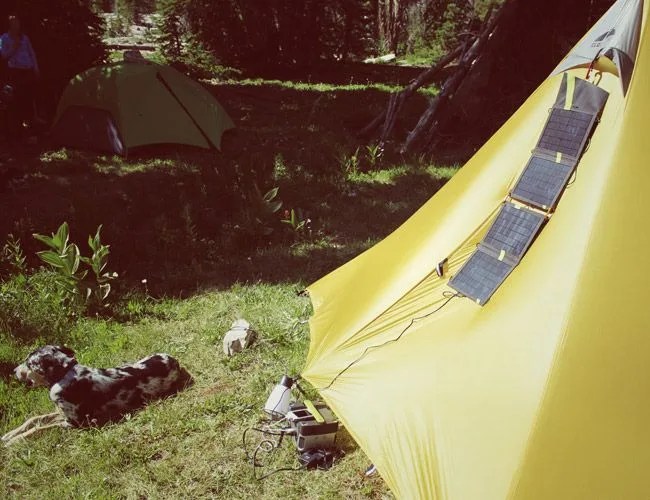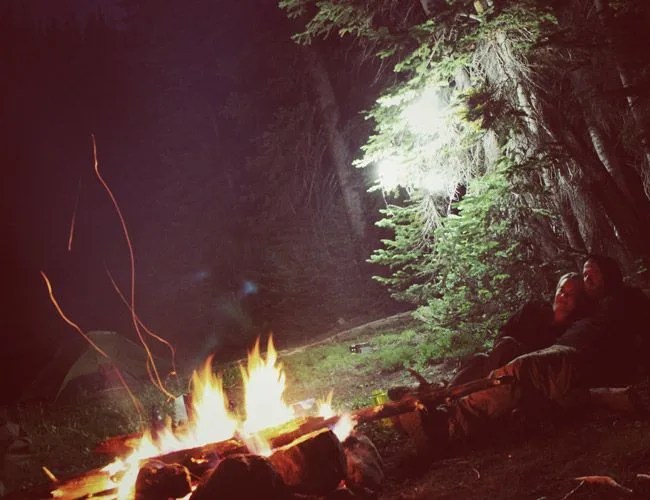Even the most seasoned adventurer has had that terrible moment: miles from the car on an arduous hike back from the latest backcountry adventure, your headlamp sputters out on a moonless night. There’s not much recourse to this tragedy (unless you enjoy fumbling through the dark with a heavy pack all night). If you’d prefer to make it back to civilization in one piece — and have a little luxury — on your next mountain excursion, having back-up batteries and a solar charger goes a long way. We tested out some of Goal Zero Solar‘s newest back-up batteries and portable solar panels on a recent backpacking trip through the Uinta Range in northeast Utah — the result of which was some serious peace of mind and a continuation of our on-the-grid obsessions.
MORE E-TESTING: eFlow E3 Nitro Bicycle | Stihl KombiSystem | BioLite Camp Stove
First, there a couple things to understand about solar-powered collection and storage. All batteries are not created equal. The lithium ones in your headlamp (sure, you could use alkaline or NiCad, but come on man, step into the 21st century) and smartphone don’t operate like the rechargeables of the past. They thrive when they are continually “topped off” rather than cycled from 100% to dead and back again. Keeping them as close to full power as possible is the ticket to keeping the lights on. Enter the Goal Zero Nomad 13 ($160) solar panel line. With USB and 12V outputs, they’ll keep your power packs and assorted tech in business as long as the skies are relatively clear. That brings us to the second solar lesson: you can’t just throw a panel out in the yard and expect it run at full capacity. The photovoltaic cells operate at varying degrees of efficiency depending on the angle they’re situated at — the better the angle, i.e., as close to perpendicular to the sun as possible, the more power you’ll be getting. (We watched one special person at the GoPro Mountain Games set theirs up with the panel facing to the ground and wonder out loud why they weren’t “getting any juice”).
7 photos
With those two things in mind, we packed up our camping, tech and solar gear and headed for the backcountry. Our solar setup probably was a little bit overkill, and the weight was more than you’d typically take on a backpacking trip. Our primary power pack was the Yeti 150 ($200). At just over 12 pounds, and packing more than 150 watt-hours of power and USB, 12V and regular AC outputs, this juggernaut was more than enough to keep cell phones, GPS units, camp lanterns and our DSLRs charged up for the whole trip (and can charge ’em all at once if needed). Combined with a pair of the Nomad 13s, the whole kit never saw power dip below 80%, even when charging gadgets full time. This setup did prove to be a little unwieldy for longer trips: try hauling all your fishing and climbing gear for a day trip, herding a pair of rowdy dogs and add in 15 pounds of solar power kit for good measure.
We elected to keep the Yeti as our basecamp workhorse and travel fast and light with the Guide 10 Plus Kit ($120) as we made our way between remote peaks and hidden fly fishing spots. This kit downsizes enough to be easily portable. We simply attached the panels to our day packs with a couple carabiners and made sure to point them skyward when we stopped. With the included AA-battery power cell we had energy for anything we needed to keep topped off on our way to and from basecamp.
Solar power and night don’t normally mix, but we found that the Yeti nicely handled lighting up camp with a few of the super bright Light-a-Life lanterns. With a 9-foot cord and carabiner for hanging them up in tents or around camp, there’s really no excuse for stumbling around in the dark (just be wary of all the mosquitoes they can attract). Chaining a few together, we were able to light up our entire basecamp for a few hours each night with no worries about power consumption; at 3 watts an hour we could have run the whole system while charging our gear for almost a full day straight if we had to. Like the Yeti, though, these are probably more of a basecamp convenience than a backpacking accessory.
